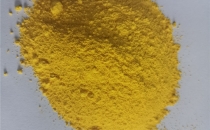Physical and chemical properties of
bismuth oxide
1.
Bismuth oxide is a light yellow powder, which turns orange when heated, turns reddish-brown when heated, and turns light yellow after cooling.
2. Insoluble in water and alkali, soluble in acid to form bismuth salt, which can be reduced by C and CH4.
3. Its melting point is 824°C and boiling point is 1890°C.
Bismuth oxide usually exists in α, β, γ and two non-stoichiometric phase crystal forms.
The four main crystal phases are: monoclinic α-Bi2O3, tetragonal β-Bi2O3, volume cubic γ-Bi2O3, face cubic δ-Bi2O3, and non-stoichiometric phases Bi2O2.33 and Bi2O2.75. The α and δ phases are low-temperature and high-temperature stable phases, respectively, and the other phases are high-temperature metastable phases.
The α-type bismuth oxide is yellow monoclinic crystal, the relative density of bismuth trioxide is 8.9, and the melting point is 825°C. Bismuth trioxide is soluble in acid, but insoluble in water and alkali.
Bismuth oxide β-type is bright yellow to orange, tetragonal. It is easily reduced to metallic bismuth by hydrogen, hydrocarbons, etc.
The preparation method of bismuth oxide
At present, there are two mainstream production methods: fire method and wet method
1. Preparation of bismuth oxide by fire method
Bismuth metal (add nitric acid) → dissolve → filter → concentrate → crystallize → calcinate → pulverize to obtain bismuth oxide

Preparation of Bismuth Oxide by Direct Fire Method
Put the concentrated and crystallized bismuth nitrate into a can and put it into a calciner at a temperature of 500-600 degrees to calcinate and denitrify, and then pulverize to obtain bismuth oxide
Disadvantages of fire method:
Pyrochemical production consumes a lot of energy, and a large amount of toxic gas overflows during calcination. If no absorption treatment is given, it will pollute the air.
In industry, bismuth oxide is mostly produced by fire method
2. Wet preparation of bismuth oxide
2Bi(NO3)3+6NaOH=Bi2O3+6NaNO3+3H2O
Metal bismuth + nitric acid → dissolve → filtrate + NaOH → neutralize → filter
1. The use of wet production avoids air pollution during the calcination process
2. The use of wet production saves the ball milling process and saves energy and equipment investment
3. The product quality is stable and sodium nitrate is produced by-product at the same time

